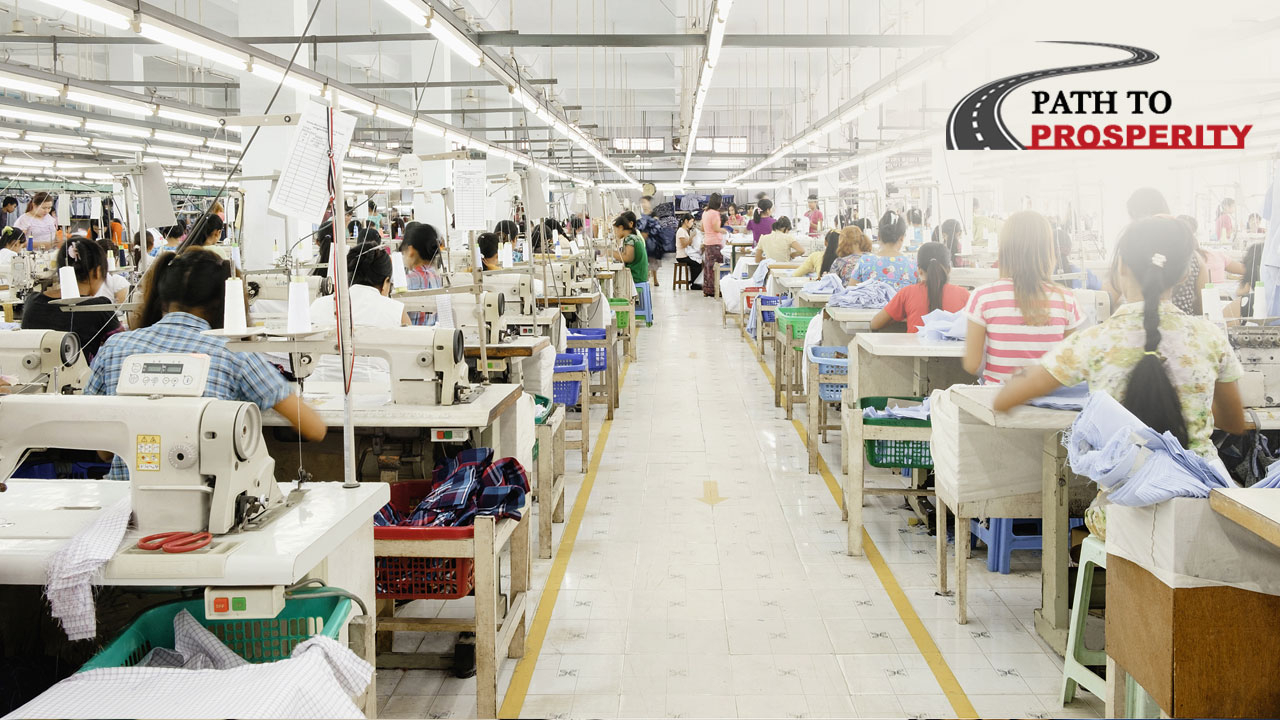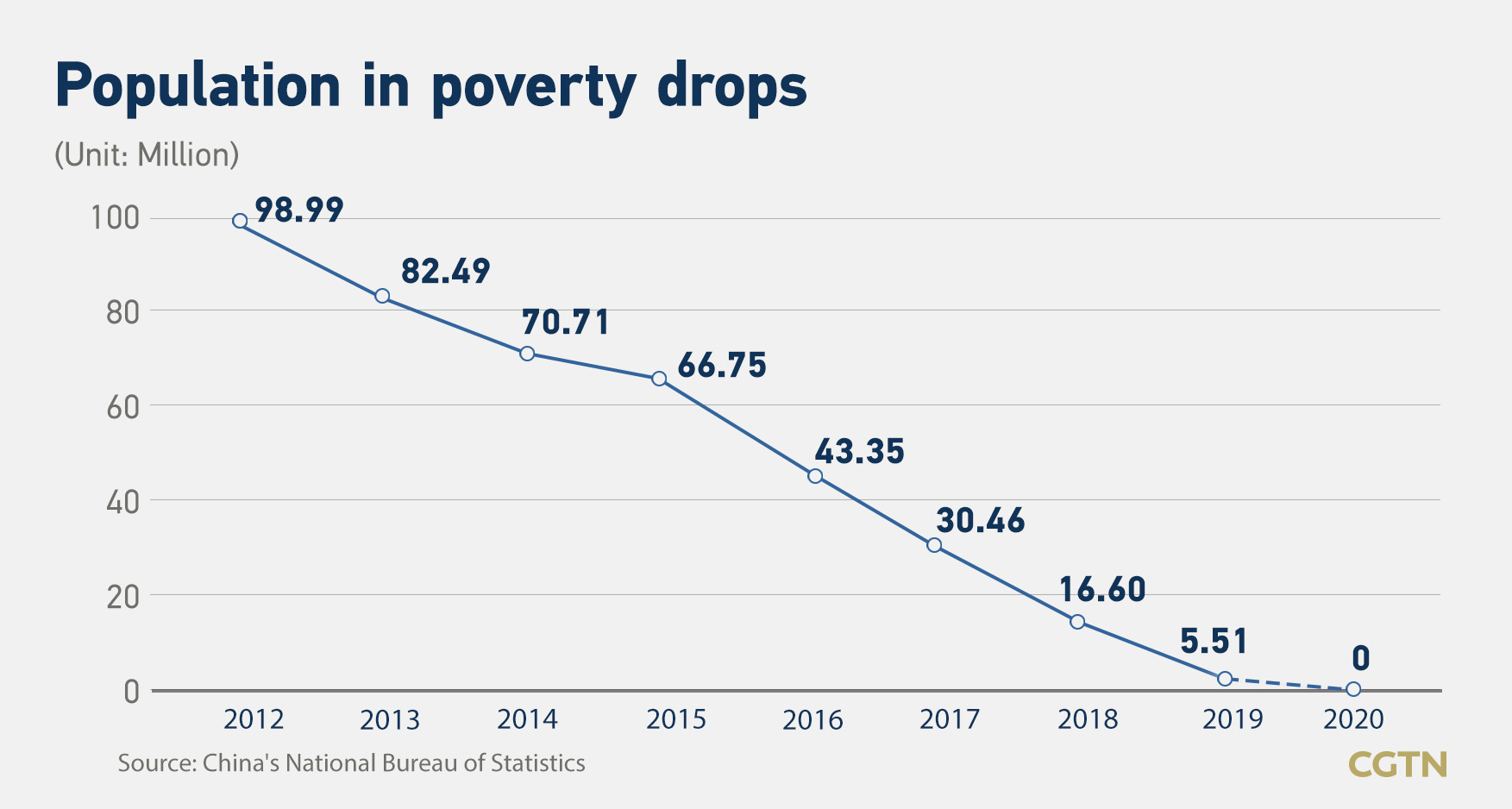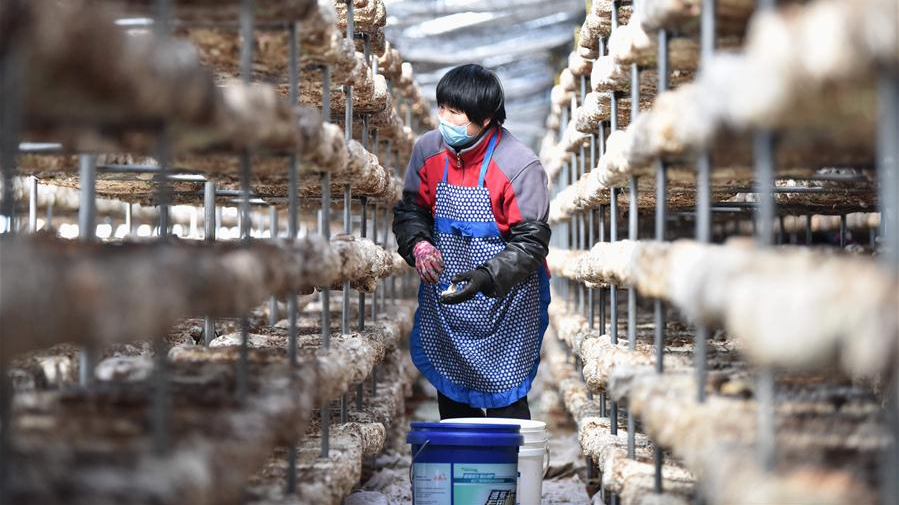
China has made every effort to secure jobs for the impoverished population, even under the hit of the COVID-19 pandemic, as poverty alleviation through employment has played a vital role in the country's strategies to fight poverty.
Chinese authorities are making unremitting efforts to win the tough battle against poverty in 2020 – the year marks the deadline for China to eradicate absolute poverty.
President Xi Jinping has stressed many times that employment is a poverty alleviation strategy, since employment can lift the whole family out of poverty. Increasing employment is the most effective and direct way to get rid of poverty. Additionally, long-term employment can also effectively solve the intergenerational transmission of poverty.
As of the end of September in 2019, a total of 11.26 million poor labor force have been assisted to secure a job in China. In a broad view, the country saw the number of impoverished rural residents decline from nearly 100 million in late 2012 to 5.51 million by the end of 2019, according to data from China's National Bureau of Statistics.

However, there are still 52 counties and 1,113 villages on the country's poverty list, and the current outbreak has weighed on difficulties to complete the mission.
Local authorities should provide targeted employment assistance to stop people from returning to poverty due to the outbreak, said a circular issued by the Ministry of Human Resources and Social Security and the State Council Leading Group Office of Poverty Alleviation and Development in February.
The circular also stressed to need to assist employment in deeply-impoverished regions by creating targeted job opportunities and enhancing export of organized labor services.
With the premise that the epidemic situation is controlled in China, migrant workers have been organized to return to work in a safe and orderly manner, while companies, poverty alleviation workshops, and farmland irrigation projects have resumed operation in regions less affected by the epidemic.

A farmer works at a greenhouse of a mushroom farm in Kaiyuan Township of Dingzhou City, north China's Hebei Province, March 16, 2020. Poverty alleviation agricultural bases in Dingzhou have resumed production amid strict measures against the novel coronavirus epidemic. /Xinhua
A farmer works at a greenhouse of a mushroom farm in Kaiyuan Township of Dingzhou City, north China's Hebei Province, March 16, 2020. Poverty alleviation agricultural bases in Dingzhou have resumed production amid strict measures against the novel coronavirus epidemic. /Xinhua
Work resumption for the poor labor force
Since March, party committees and governments in various regions have continued to make efforts to organize poor labor force to return to work.
As of April 3, over 220 million poor migrant workers in 25 provinces have been organized to return to work, accounting for 82.15 percent of the total migrant workers last year. The figure increased by over 8.22 million people, or 30.12 percentage points from March 6, according to the State Council Leading Group Office of Poverty Alleviation and Development.
Among the 22 provinces in the central and western China, 28,106 out of 29,033, or 96.81 percent, leading poverty alleviation enterprises have resumed work, involving 713,000 people of the poor population.
Additionally, 261,200 out of 377,700, or 69.27 percent, poverty alleviation projects have resumed.

Workers are processing electronic transformers in the poverty alleviation workshop in Hecheng New District, Longlin Autonomous County, Guangxi Zhuang Autonomous Region, on April14, 2020. /Xinhua
Workers are processing electronic transformers in the poverty alleviation workshop in Hecheng New District, Longlin Autonomous County, Guangxi Zhuang Autonomous Region, on April14, 2020. /Xinhua
Policies review
Since 2016, the Chinese government established more preferential policies for the poor labor force and employment service agencies. Compared with ordinary laborers, there are more subsidy projects and higher subsidy standards for poor laborers in employment and entrepreneurship.
China made great headway in reducing poverty with targeted measures, with 11.09 million rural poor people lifted out of poverty in 2019, marking the seventh consecutive year that population in poverty were reduced by over 10 million people.